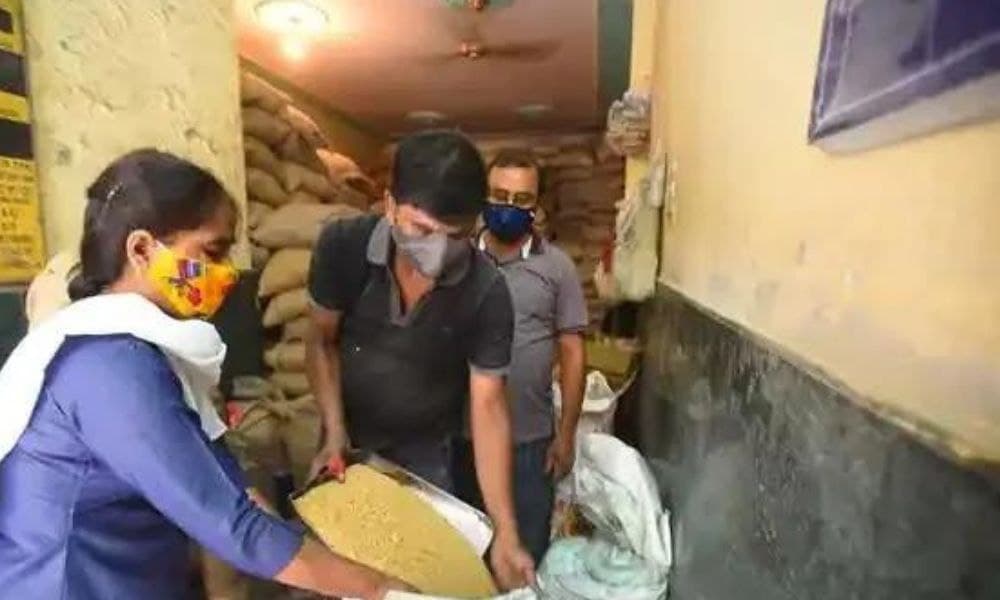
Image Credit: LiveMint
Hunger Is Forcing Even Middle-Class Families To Line Up For Rations
Writer: Madhusree Goswami
A mountain girl trying to make it big in the city. She loves to travel and explore and hence keen on doing on-ground stories. Giving the crux of the matter through her editing skills is her way to pay back the journalism its due credit.
India, 18 July 2021 8:14 AM GMT
Editor : Ankita Singh |
A literature lover who likes delving deeper into a wide range of societal issues and expresses her opinions about the same. Keeps looking for best-read recommendations while enjoying her coffee and tea.
Creatives : Madhusree Goswami
A mountain girl trying to make it big in the city. She loves to travel and explore and hence keen on doing on-ground stories. Giving the crux of the matter through her editing skills is her way to pay back the journalism its due credit.
With job losses, shrinking incomes and rising households debts, the middle class has been left to fend for themselves.
Over a year and a half since the coronavirus pandemic struck the world, loss of lives, source of livelihoods for many and depleting savings has been a matter of concern. The crisis has pushed many into poverty and widened the wealth gap between the rich and the poor. The crisis has even forced even the middle-class Indians to queue up for rations.
The second wave of the virus has battered the middle-class even more. According to a Pew Research Centre report, the country's middle-class population shrunk by at least 32 million with 75 million people driven below the poverty line in 2020. India contributed 60 per cent to the worldwide drop in the middle-class population.
The group numbers about 600 million people and makes up about 28 per cent of the total population and 79 per cent of the total taxpayer base. It also contributes 70 per cent to the total consumer spending. Essentially, those with incomes between $10 and $20 per day are categorised under the middle class.
"Rapid economic growth in India had created this aspirational class, a forward-looking class, which likes to look toward the future," said Neeraj Hatekar, a former economics professor at Mumbai University.
Job Losses In The Pandemic
In May, during the peak of the second wave, an estimated 15 million Indians lost their jobs, according to the Centre for Monitoring the Indian Economy. With savings dwindling and expenses to meet, many people had to resort to selling valuables like jewelry or take loans to make ends meet. India's household savings dropped to 22.1% of GDP in the quarter through December, from 28.1 per cent in the three months ended June last year. There has been a sharp increase in household debts as well. Household debt has risen sharply to 37.3% in 2020-21 from 32.5% in 2019-20, according to a report by State Bank of India economists.
All of this has translated into an increase in hunger, particularly in urban areas, in a nation that already accounts for nearly a third of the world's malnourished people.
"This desperation for food and the long lines for rations in families with two wage earners is unprecedented," said Aditi Dwivedi, who works with migrant communities in the capital at Satark Nagrik Sangathan, a group that works on transparency and accountability in government that has advocated for more food aid for the needy.
'More Middle-Class Families Seeking Help This Time'
In fact, the number of people living in households with daily incomes below $5 level went up from 298.6 million, at the start of the outbreak in March 2020 to 529 million at the end of October, the study said.
In southeast Delhi, 45-year-old Naresh Kumar had to line up outside his local food distribution shop at 5 am nearly every day last month to ensure he got there before supplies ran out. "On days when they had food, rations got over before my turn arrived," said Kumar, who is still struggling to find work after both he and his wife lost their jobs last year.
Also Read: NTPC To Construct India's Largest Solar Park In Rann Of Kutch
 All section
All section














